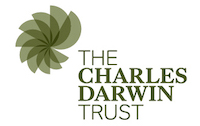Chatty shipboard observations for her mother in England while en route to New York City; behavior of passengers; illnesses; favorable first impressions of America, on way to Canada, then settles in Southern U.S. Finds comfortable teaching situation in Georgia girl’s school. Wishes mother could join her, but distance is prohibitive.

The Alfred Russel Wallace Collection
Alfred Russel Wallace (1823 - 1913) was one of the world's most important scientists. His seminal contributions to biology rival those of his friend and colleague Charles Darwin, though he is far less well known. Together Wallace and Darwin proposed the theory of evolution by natural selection in 1858, and their prolific subsequent work laid the foundations of modern evolutionary biology, and much more besides.
Wallace made enduring scholarly contributions to subjects as diverse as glaciology, land reform, anthropology, ethnography, epidemiology, and astrobiology. His pioneering work on evolutionary biogeography (the science that seeks to explain the geographical distribution of organisms) led to him becoming recognised as that subject’s ‘father’. Beyond this Wallace is regarded as the pre-eminent collector and field biologist of tropical regions of the 19th century, and his book The Malay Archipelago (which was Joseph Conrad’s favourite bedside reading) is one of the most celebrated travel writings of that century and has never been out of print. Wallace was a man with an extraordinary breadth of interests who was actively engaged with many of the big questions and important issues of his day. He was anti-slavery, anti-eugenics, anti-vivisection, anti-militarism, anti-Imperialism, a conservationist and an advocate of woman's rights. He strongly believed in the rights of the ordinary person, was a socialist, an anti-vaccinationist (for rational reasons), and a believer in naturalistic, evolutionary spiritualism. He did not come from a privileged background and was largely self-taught. For a brief biography see https://wallaceletters.myspecies.info/content/mini-biography
The Wallace Correspondence Project (WCP) was founded by George Beccaloni in 2010. Its aims are to locate, digitise, catalogue, transcribe, interpret and publish Wallace's surviving correspondence and other manuscripts. About 5,700 letters to and from Wallace are currently known to survive, and they are held by c. 240 institutions and individuals worldwide. Wallace's letters are a biographical treasure trove, which provides a far better picture of the 'real' Wallace than his heavily edited and censored published writings (e.g. his autobiography My Life (1905) and his letters in Marchant's Letters and Reminiscences (1916)). For example, Wallace never even mentions his wife's name (Annie) in any of his published writings, including his autobiography. The letters are also key to gaining a deeper understanding of his scientific and other work: how and why his ideas arose, and how they evolved over time.
The WCP is unlocking this valuable resource by gathering all the letters together for the first time, and transcribing them so that they can be more easily read and information within them discovered using electronic searches for words and phrases. The vast amount of unpublished information which is coming to light will surely form the basis for numerous articles, scholarly papers, PhD theses and perhaps the first definitive biography.
Epsilon is being used by the WCP's as its online archive of Wallace's correspondence. It replaces our previous archive, Wallace Letters Online, which was last updated in 2015. The process of editing the transcripts and associated metadata is a work in progress which will take many years to complete. Our project’s policy is, however, to make the information we have available to users at the earliest possible opportunity, even if it is incomplete and/or imperfect. For a guide to our data, including the protocols we use for metadata and transcriptions, please see https://wallaceletters.myspecies.info/content/epsilon




